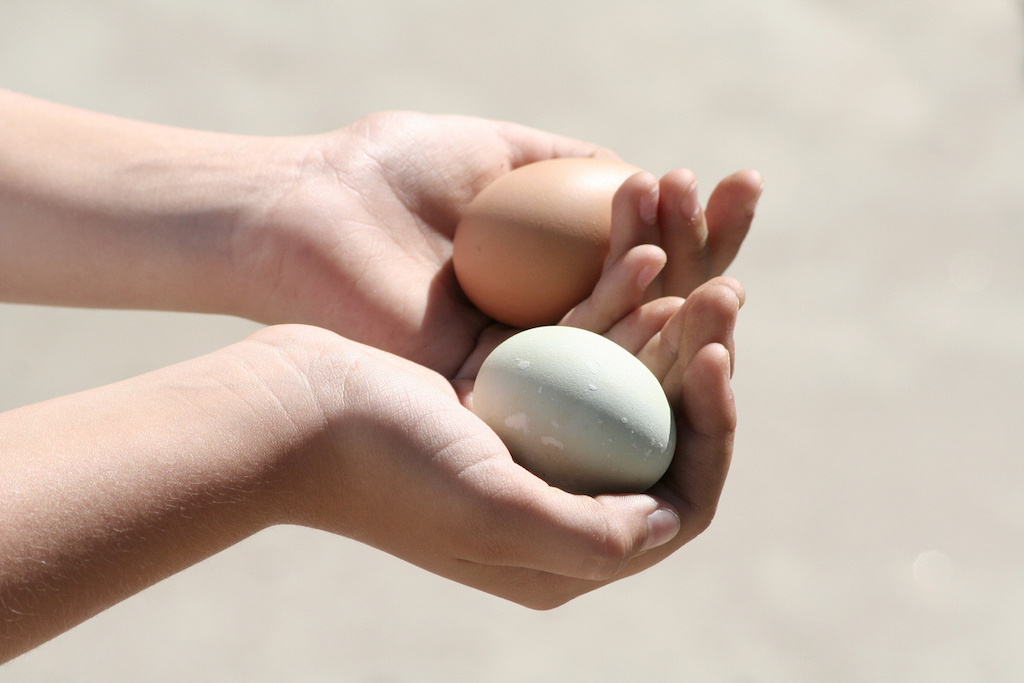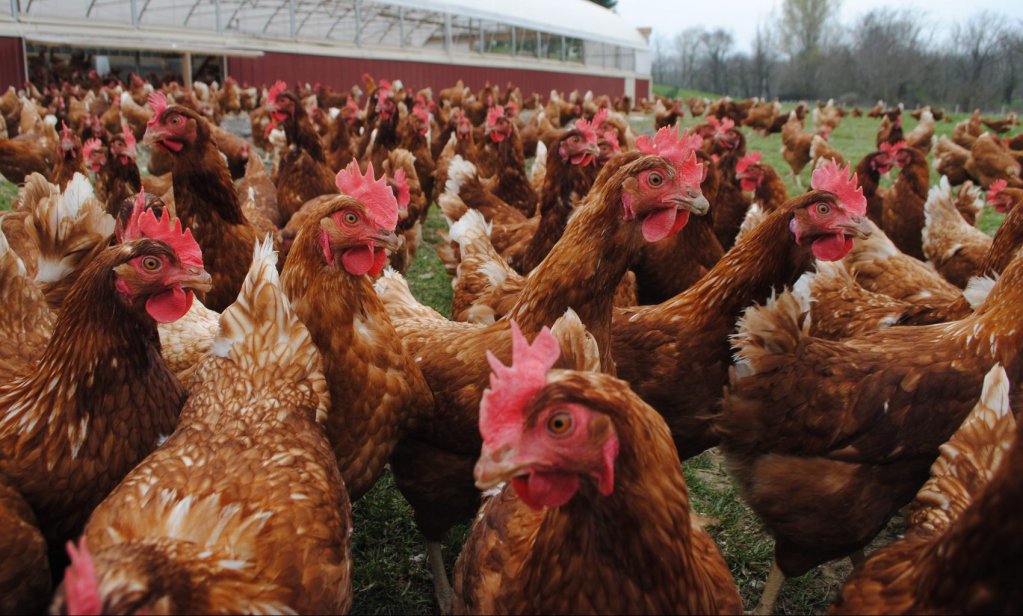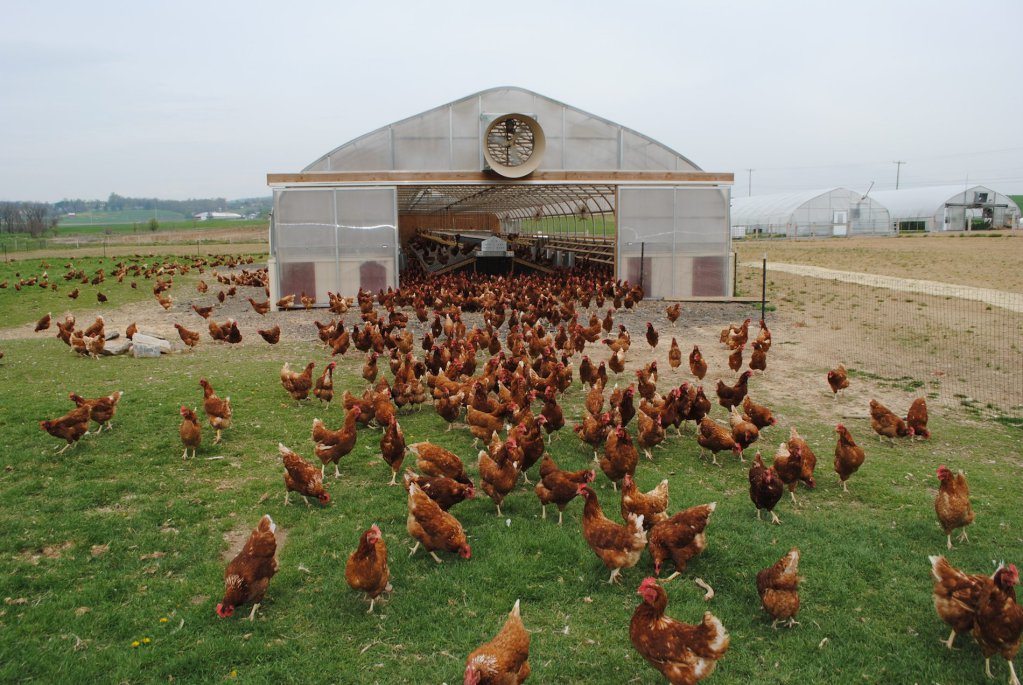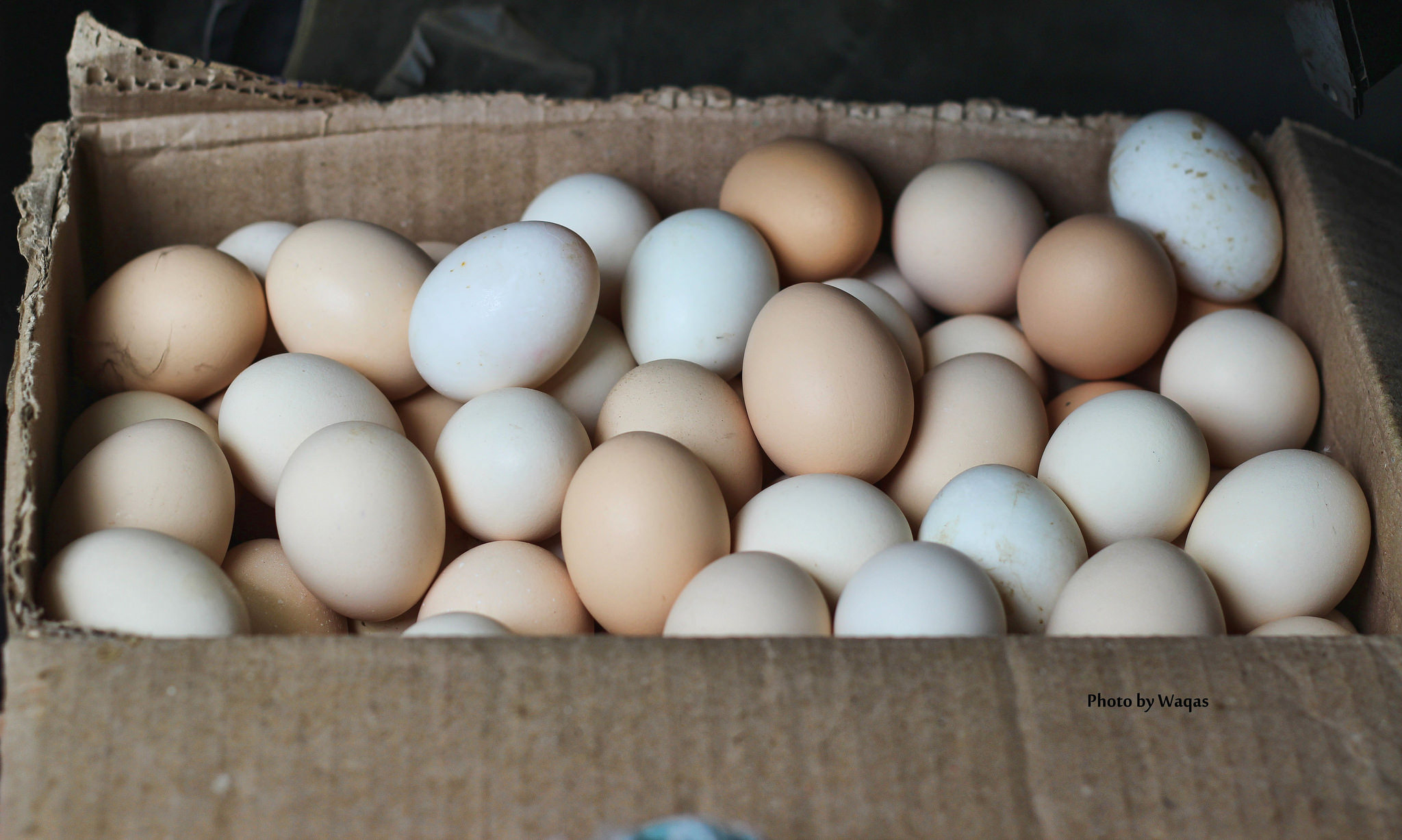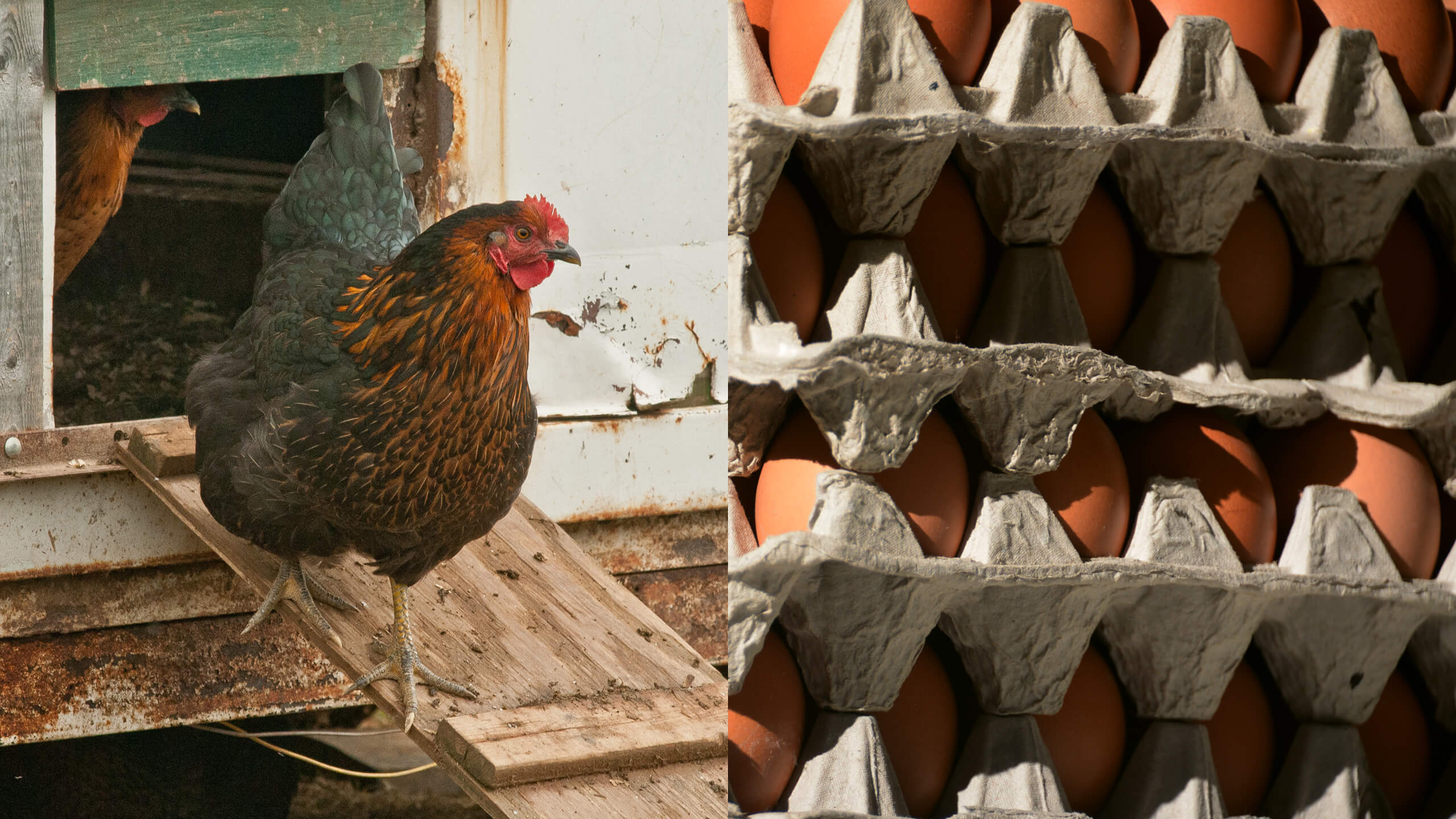
USDA/Lance Cheung/Flickr/Panegyrics of Granovetter
A panic-induced run on eggs, coupled with a shortage of truck drivers to deliver fresh inventory, means they’ll be more expensive, and in shorter supply this year.
In these days of self-isolation and quarantine, most Americans are resigned to smaller, if any, Easter celebrations. When church services and family gatherings are cancelled, little holiday rituals, like coloring eggs with the kids, become more important. But with the pandemic-induced run on eggs in the past weeks, and many retail cases still mostly empty, will there even be any eggs to dye?
Last year, Americans consumed almost 3 billion eggs at Easter, and while many producers have released their Easter inventories early to meet the spike in demand of the last two weeks, industry experts claim the 2020 situation is fluid. Marc Dresner, spokesperson for the American Egg Board, told me via email that it’s hard to anticipate what the situation will look like in two weeks. Consumers could pull from the inventory they already have, instead of buying more, but “We do expect Easter-driven demand to be lower than usual, since consumers will not be entertaining, and local events are cancelled. More generally, demand driven by Covid-19 will presumably remain high in the weeks to come.”
John Brunnquell, president and CEO of Egg Innovations, an integrated pastured egg company in Wisconsin, said he believes there will be enough eggs for Easter because the supply that would normally have been delivered to food-service customers (restaurants, hotels, schools, and cruise lines) will be repackaged from flats to cartons and redirected to the retail market. But sticker shock might give shoppers pause. Last week the price of eggs shot up 90 cents a dozen, and that will be reflected at retail by this weekend.
“Our chickens today don’t know that there’s coronavirus. They’re laying the same amount of eggs they laid in February that they laid in January that they’re gonna lay in June.”
Unlike processed food and manufactured products, such as toilet paper and hand sanitizer, where a factory can add shifts and simply make more, hens can’t lay any more eggs than they usually do. “Our chickens today don’t know that there’s coronavirus,” said Brunnquell. “They’re laying the same amount of eggs they laid in February that they laid in January that they’re gonna lay in June.”
At Egg Innovations, business was up more than 120 percent last week alone, with many large grocery accounts doubling their orders. “We in the industry just don’t understand how to respond because it doesn’t follow a logical process,” said Brunnquell. “But on the other hand, it’s real.”
Filling those orders—and during a normal, non-pandemic time, holiday orders at Easter and Thanksgiving—is a matter of inventory management. “We have 340 million chickens in the nation; we got 330 million people,” he added. “There’s enough chickens to provide the nation with eggs.”
As with many other essentials like rice and beans, the empty shelves in the grocery store aren’t a result of a product shortage. Rather, it’s a two-pronged logistical issue.
Each chicken lays about eight eggs every 10 days. During a run-up to the holidays, producers might hold back 5 to 10 percent of the production for a couple of months. As anyone who raises backyard chickens knows, eggs are covered in a cuticle called “bloom,” a membrane that seals the shell, preventing pathogens from entering and keeping moisture in. As long as the eggs aren’t washed, they remain fresh in cold storage for weeks. As the demand grows and peaks close to the holiday, the inventoried stock gets rotated, washed, graded, and shipped.
As with many other essentials like rice and beans, the empty shelves in the grocery store aren’t a result of a product shortage. Rather, it’s a two-pronged logistical issue.
After they’re collected from the chickens, eggs are washed and graded: sorted according to size and quality. USDA graders look for things like shape; uniformity, integrity, and cleanliness of the shell; and internal characteristics like the size of the air cell and the quality of the yolk and white. Even with high-efficiency egg grading machines, processors can only handle so much volume. “They [the graders] can handle it when you increase the volume 30 or 50 percent. But when you increase it 200 percent, that’s one issue,” said Brunnquell. “The second issue is logistics. It’s just truck drivers. If we have a customer who takes three truckloads a week and now wants six, we have to find three more trucks. That’s happening all over the nation.”
“If consumers would buy at a normal pace for just one week, we’d be back to normal.”
For people who stockpiled eggs in anticipation of an Easter shortage, the news may not be happy. The American Egg Board said because the eggs have been washed and the cuticle removed, raw eggs in the shell last about three weeks from purchase if kept refrigerated at 40 degrees, inside the carton, and on an inside refrigerator shelf, not the door. After that, the eggs don’t necessarily spoil, but they do start to dry out, and the quality suffers. Hardboiled eggs in the shell last a week. If you bought more than you can use in a few weeks, AEB has suggestions for how to freeze eggs (not in the shell) on the incredibleegg.org website and plenty of recipes.
Brunnquell suggests that people not panic-buy. “If consumers would buy at a normal pace for just one week, we’d be back to normal,” he said. Alan Lewis of Natural Grocers echoes the sentiment. “There will be eggs at Easter, but not an excess, and don’t hoard them.”

